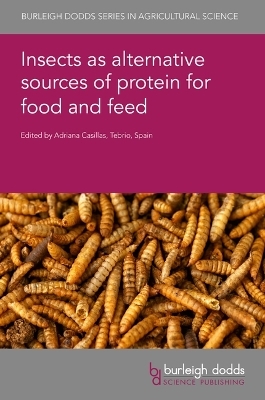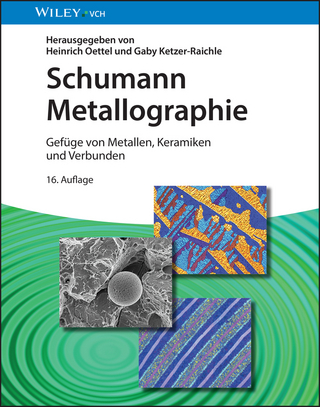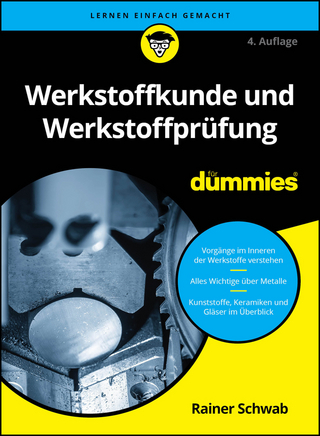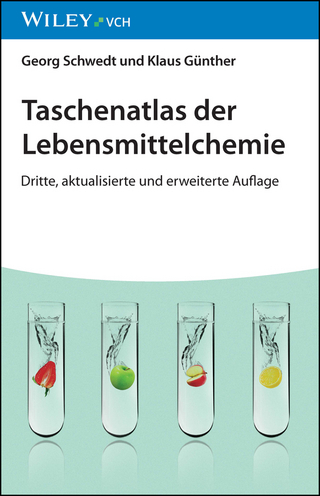
Insects as Alternative Sources of Protein for Food and Feed
Burleigh Dodds Science Publishing Limited (Verlag)
978-1-80146-584-7 (ISBN)
With significant concerns about the environmental impact of conventional crop and livestock production, there is a growing interest in utilising novel alternative sources of protein in both human and animal diets. Insects have long been consumed by an array of species, such as birds, fish and mammals, including humans.
Insects as alternative sources of protein for food and feed provides a comprehensive overview of the recent research undertaken in this rapidly-expanding area. The book reviews the production and application of black soldier flies, yellow mealworms and other insects as alternative protein sources in poultry, pig and fish feed, as well as their nutritional benefits and challenges that can arise as a result of their use.
Through its considered approach, the book explores how the safety of insect-derived protein can be ensured across the supply chain, as well as how we can optimise its use as a sustainable feed and food source which contributes to a more resilient food system.
Adriana Casillas is co-founder and CEO of Tebrio. Tebrio is Spain’s first, award-winning, large-scale manufacturer of insect protein for food, feed, pet food and other applications. Collaborators with Tebrio include the Universities of Almería, Burgos and Granada. Adriana was also Vice-President of the International Platform of Insects for Food and Feed (IPIFF) from 2016-2021 and is currently President of IPIFF.
Part 1 Production and applications of black soldier flies
1.Advances in substrate source composition for rearing black soldier fly larvae as a protein source: Cecilia Lalander and Ivã Guidini Lopes, Swedish University of Agricultural Sciences, Sweden;
2.Pathogens and diseases affecting large-scale production of black soldier fly: Roberto M. Pereira, University of Florida, USA;
3.Use of protein from black soldier flies in poultry feed: Arya Rezaei Far, Somaya Naser El Deen and Teun Veldkamp, Wageningen University and Research, The Netherlands;
4.Black soldier fly meal: an alternative protein source for pigs: S. Struthers, and J. G. M. Houdijk, Scotland’s Rural College (SRUC), UK; and H. N. Hall, Anpario plc, UK;
5.Use of protein from black soldier flies in fish feed: Laura Gasco, University of Torino, Italy; Vlastimil Stejskal and Hung Quang Tran, University of South Bohemia in Ceske Budejovice, Czech Republic; Michele Costantini, Michele Zoli and Jacopo Bacenetti, University of Milano, Italy; and Francesco Gai, National Research Council, Italy;
Part 2 Production and application of yellow mealworms and other insects
6.Advances in mass breeding/rearing techniques for yellow mealworms as a protein source: David Deruytter, Carl Coudron and Jonas Claeys, Insect Research Centre, Belgium;
7.Advances in nutrient/substrate sources/composition for rearing yellow mealworms as a protein source: Riccardo Melis and Roberto Anedda, Porto Conte Ricerche S.r.l., Italy;
8.Diseases affecting production of yellow mealworms as a protein source: Antoine Lecocq, University of Copenhagen, Denmark; Helen Hesketh and Pascal Herren, UK Centre for Ecology & Hydrology, UK; and Jozsef Takacs and Annette Bruun Jensen, University of Copenhagen, Denmark;
9.Use of protein from yellow mealworms in poultry feed: M. Mabelebele, E. Malematja, S. D. Kolobe, T. G. Manyelo, N. A. Sebola, and F. Manyeula, University of South Africa, South Africa;
10.Use of protein from yellow mealworms in fish feed: Enric Gisbert, Aquaculture Program – Institute of Agrifood Research and Technology (IRTA), Spain; and Alberto Ruiz, Aquaculture Program – Institute of Agrifood Research and Technology (IRTA), Spain and Aquaculture and Fisheries Group – Wageningen University and Research, Wageningen, The Netherlands;
11.Advances in production of house flies as food and animal feed: key challenges and solutions: Nathaniel A. Sibinga, Katholieke Universiteit (KU) Leuven, Belgium; Eugene Won and Vimal Selvaraj, Cornell University, USA;
12.Advances in production of crickets as food and animal feed: Chrysantus M. Tanga, International Centre of Insect Physiology and Ecology (icipe), Kenya; Margaret O. Kababu, International Centre of Insect Physiology and Ecology (icipe) and Jaramogi Oginga Odinga University of Science and Technology (JOOUST), Kenya; and Dennis Beesigamukama, International Centre of Insect Physiology and Ecology (icipe), Kenya;
Part 3 General issues in use of insect protein
13.The chemical and microbial safety of insect-based feed and food: Christelle Planche and Erwan Engel, INRAE - UR370 Animal Products Quality Unit, France; and Christina Nielsen-LeRoux, Université Paris-Saclay – INRAE-UMR1319 Micalis-AgroParisTech, France;
14.Understanding and changing attitudes towards eating protein derived from insects: Ashkan Pakseresht, Brunel University London, Brunel Business School, UK; and Lynn Frewer, Newcastle University, School of Natural and Environmental Sciences, UK;
| Erscheinungsdatum | 12.11.2024 |
|---|---|
| Reihe/Serie | Burleigh Dodds Series in Agricultural Science |
| Co-Autor | Dr Cecilia Lalander, Dr Ivã Guidini Lopes, Dr Roberto Pereira, Arya Rezaei Far |
| Zusatzinfo | Color tables, photos and figures |
| Verlagsort | Cambridge |
| Sprache | englisch |
| Maße | 152 x 229 mm |
| Themenwelt | Naturwissenschaften ► Chemie |
| Technik ► Lebensmitteltechnologie | |
| ISBN-10 | 1-80146-584-3 / 1801465843 |
| ISBN-13 | 978-1-80146-584-7 / 9781801465847 |
| Zustand | Neuware |
| Informationen gemäß Produktsicherheitsverordnung (GPSR) | |
| Haben Sie eine Frage zum Produkt? |
aus dem Bereich


